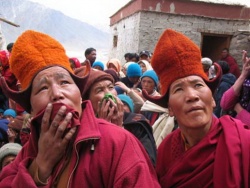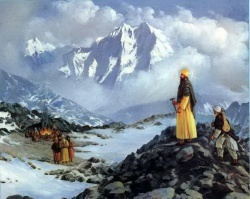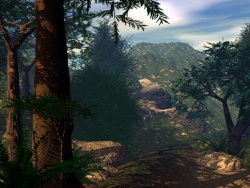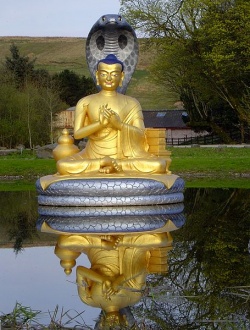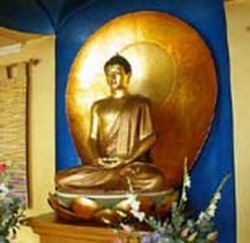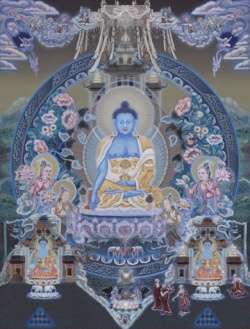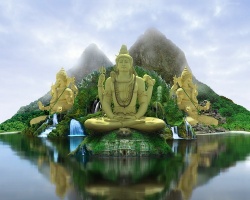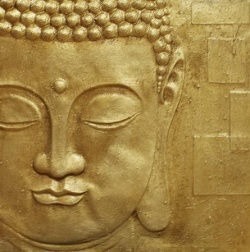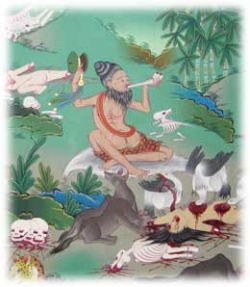Genjo Koan
When all dharmas are the Buddha-dharma, then there is delusion and realization, there is practice, there is life and there is death, there are buddhas and there are ordinary beings.
When the myriad dharmas are each not of the self, there is no delusion and no realization, no buddhas and no ordinary beings, no life and no death.
The Buddha's truth is originally transcendent over abundance and scarcity, and so there is life and death, there is delusion and realization there are beings and buddhas.
And though it is like this, it is only that flowers, while loved, fall; and weeds while hated, flourish.
Driving ourselves to practice and experience the myriad dharmas is delusion.
When the myriad dharmas actively practice and experience ourselves, that is the state of realization.
Those who greatly realize delusions are buddhas
Those who are greatly deluded about the realization are ordinary beings.
There are people who further attain realization on the basis of realization.
There are people who increase their delusion in the midst of delusion.
When buddhas are really buddhas they do not need to recognize themselves as buddhas.
Nevertheless, they are the buddhas in the state of experience, and they go on experiencing the state of buddha.
When we use the whole body-and-mind to look at forms, and when we use the whole body-and-mind to listen to sounds, even though we are sensing them directly, it is not like a mirror's reflection of an image, and like the water and the moon.
While we are experiencing one side, we are blind to the other side.
To learn the Buddha's truth is to learn ourselves. To learn ourselves is to forget ourselves.
To forget ourselves is to be experienced by the myriad dharmas.
To be experienced by myriad dharmas is to let our body-and-mind, and the body-and-mind of the external world, fall away.
There is a state in which traces of realization are forgotten; and it manifests the traces of forgotten realization for a long, long time.
When people first seek the Dharma, we are far removed from the borders of the Dharma.
[But] as soon as the Dharma is authentically transmitted to us, we are human beings in [our] original element.
When a man is sailing along in a boat and he moves his eyes to the shore, he misapprehend that the shore is moving. If he keeps his eyes fixed on the boat, he knows that the boat which is moving forward.
Similarly, when we try to understand the myriad dharmas on the basis of confused assumptions about body and mind, we misapprehend that our own mind or our own essence may be permanent.
If we become familiar with action and come back to this concrete place, the truth is evident that the myriad dharmas are not self.
Firewood becomes ashes; it can never go back to firewood.
Nevertheless, we should not take the view that ash is its future and firewood is its past.
Remember, firewood abides in the place of firewood in the Dharma.
It has a past and it has a future.
Although it has a past and a future, the past and the future are cut off.
Ash exists in the place of ash in the Dharma. It has a past and it has a future.
The firewood, after becoming ash, does not again become firewood.
Similarly, human beings, after death, do not live again.
At the same time, it is an established custom in the Buddha-dharma not to say that life turns into death.
This is why we speak of no appearance.
And it the Buddha's preaching established in [the turning of] the Dharma wheel that death does not turn into life.
This is why we speak of no disappearance.
Life is an instantaneous situation, and death is also an instantaneous situation.
It is the same, for example, with winter and spring.
We do not think that winter becomes spring, and we do not say that spring becomes summer.
A person getting realization is like the moon being reflected in water:
the moon does not get wet, and the water is not broken.
Though the light [of the moon) is wide and great, it is reflected in a foot or an inch of water.
The whole moon and the whole sky are reflected in a dewdrop on a blade of grass and are reflected in a single drop of water.
Realization does not break the individual, just as the moon does not pierce the water.
The individual does not hinder the state of realization, just as a dewdrop does not hinder the sky and moon.
The depth [of realization) may be as the concrete height [of the moon).
The longness and shortness of its moment should be investigated in large (bodies of ] water and small (bodies of ] water. And observed in the width and the narrowness of the sky and the moon.
When the Dharma has not yet satisfied the body-and-mind we feel already replete with Dharma.
When the Dharma fills the body-and-mind we feel one side to be lacking.
For example, sailing out beyond the mountains and into the ocean, when looking around in four directions, [the ocean] only appears to be round; it does not appear to have any other form at all.
Nevertheless, this great ocean is not round, and it is not square.
Other qualities of the ocean are inexhaustibly many: [to fishes] it is like a palace and [to gods) it is like a string of pearls.
But as far as our eyes can see; it just seems to be round.
As it is for [the ocean], so it is for myriad dharmas.
In dust and out of the frame, [the myriad dharmas) encompass numerous situations, but we see and understand only as far as our eyes of learning in practice are able to reach.
If we wish to hear how the myriad dharmas naturally are, we should remember that besides their appearance of squareness or roundness, the qualities of the ocean and qualities of the mountains are numerous and endless;
and that there are worlds in the four directions.
Not only the periphery is like this: remember, the immediate present, and a single drop [of water) are also like this.
When fish move through water, however they move, there is no end to the water.
When the birds fly through the sky, however they fly, there is no end to the sky.
At the same time, fish and birds have never, since antiquity, left the water or the sky.
Simply, when activity is great, usage is great, and when necessity is small, usage is small.
Acting in this state, none fail to realize its limitations at every moment, and none fail to somersault freely at every place; but if a bird leaves the sky it will die at once, and if a fish leaves the water it will die at once.
So we can understand the water is life and can understand that sky is life. Birds are life, and fish are life.
It may be that life is birds and that life is fish. And beyond this, there may be still further progress.
This existence of [their] practice-and-experience, and the existence of their lifetime and their life, are like this.
This being so, a bird or a fish that aimed to move through the water or the sky [only] after getting to the bottom of water or utterly penetrating the sky, could never find its way or find its place in the water or in the sky.
When we find this place, this action inevitably realized as the Universe [itself].
This way and this place are neither great nor small;
they are neither subjective nor objective; neither have they existed since the past nor do they appear in the present; so they are present like this.
When a human being is practicing and experiencing the Buddha's truth in this state, to get one dharma is to penetrate one dharma, and to meet one act is to perform one act.
In this state the place exists and the way is mastered, and therefore the area to be known is not conspicuous.
The reason it so, is that this knowing and the perfect realization of the Buddha-Dharma appear together.
Do not assume that what is attained will inevitably become self-conscious and be recognized by the intellect.
The experience of the ultimate state is realized at once.
At the same time, its mysterious existence is not necessarily a manifest realization.
Realization is the state of ambiguity itself.
Zen master Hotetsu of Mayoku-zan mountain is using a fan;
A monk comes by and asks, "The nature of air is to be ever-present, and there is no place that air cannot reach.
Why then does the Master use a fan?"
The Master says, "You have only understood that the nature of air is to be ever-present, but you do not yet know the truth that there is no place air cannot reach."
The monk says, "What is the truth of there being no place air cannot reach?"
At this the Master just carries on using the fan.
The monk does prostrations.
The real experience of the Buddha-Dharma, the vigorous road of the authentic transmission, is like this.
Someone who says that because [the air) is ever-present we need to use a fan, or that even when we do not use [a fan] we can still feel the air, does not know ever-presence, and does not know the nature of the air.
Because the nature of air is to be ever-present, the behavior of Buddhists has made the Earth manifest itself as gold and has ripened the Long River into curds and whey. 6
1 from "The Platform Sutra of Hui-neng", translated from Chinese 2 translated from Chinese 3 translated from Chinese 4 translated from Chinese 5 from "Taking the Path of Zen" by Robert Aitken, 1982 6 from "Shobogenzo" of Dogen, translated by Gudo Nishijima & Chodo Cross, 1994
Source
http://www.zenguide.com/zenmedia/books/content.cfm?t=zazen_meditation_guide&chapter=20
